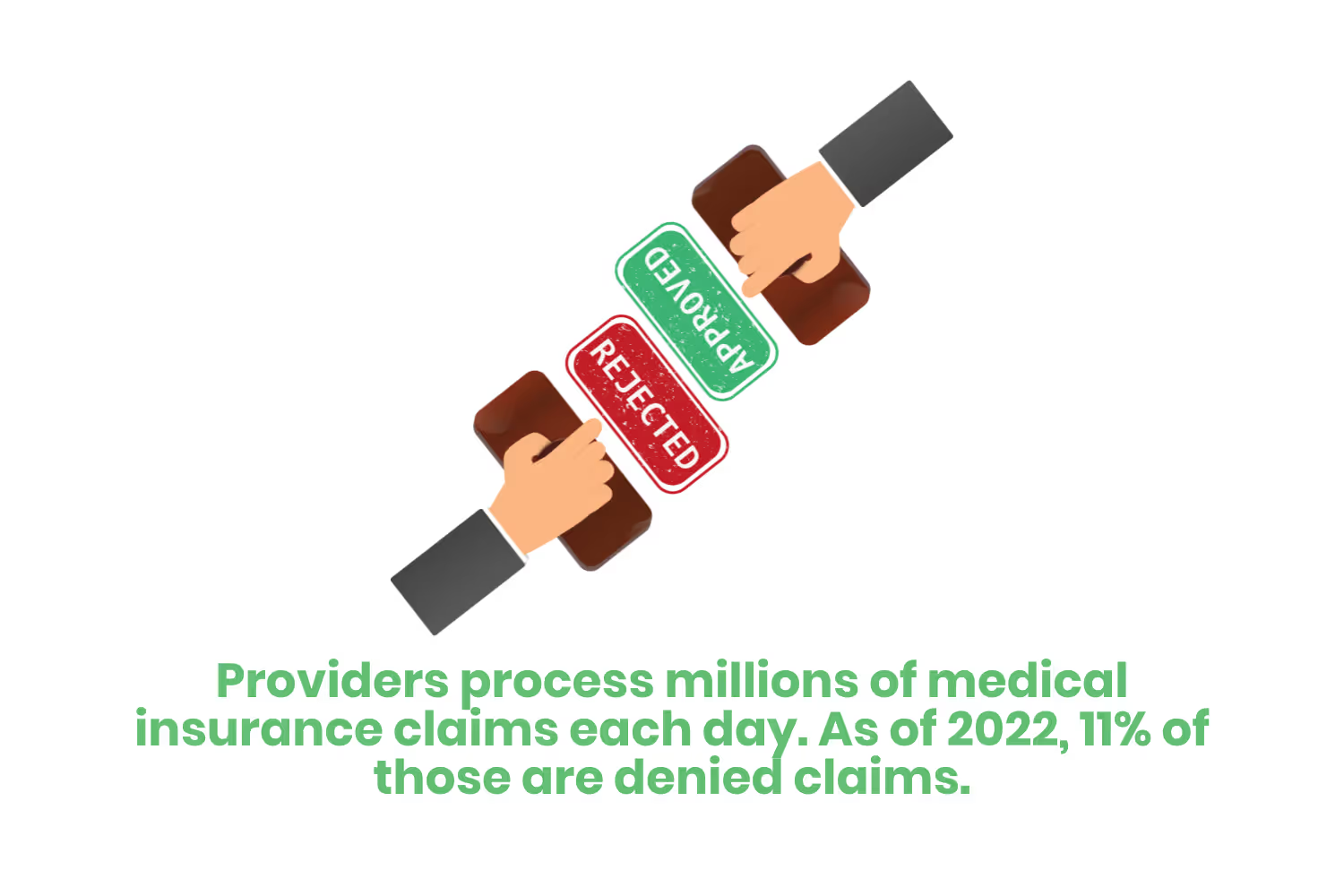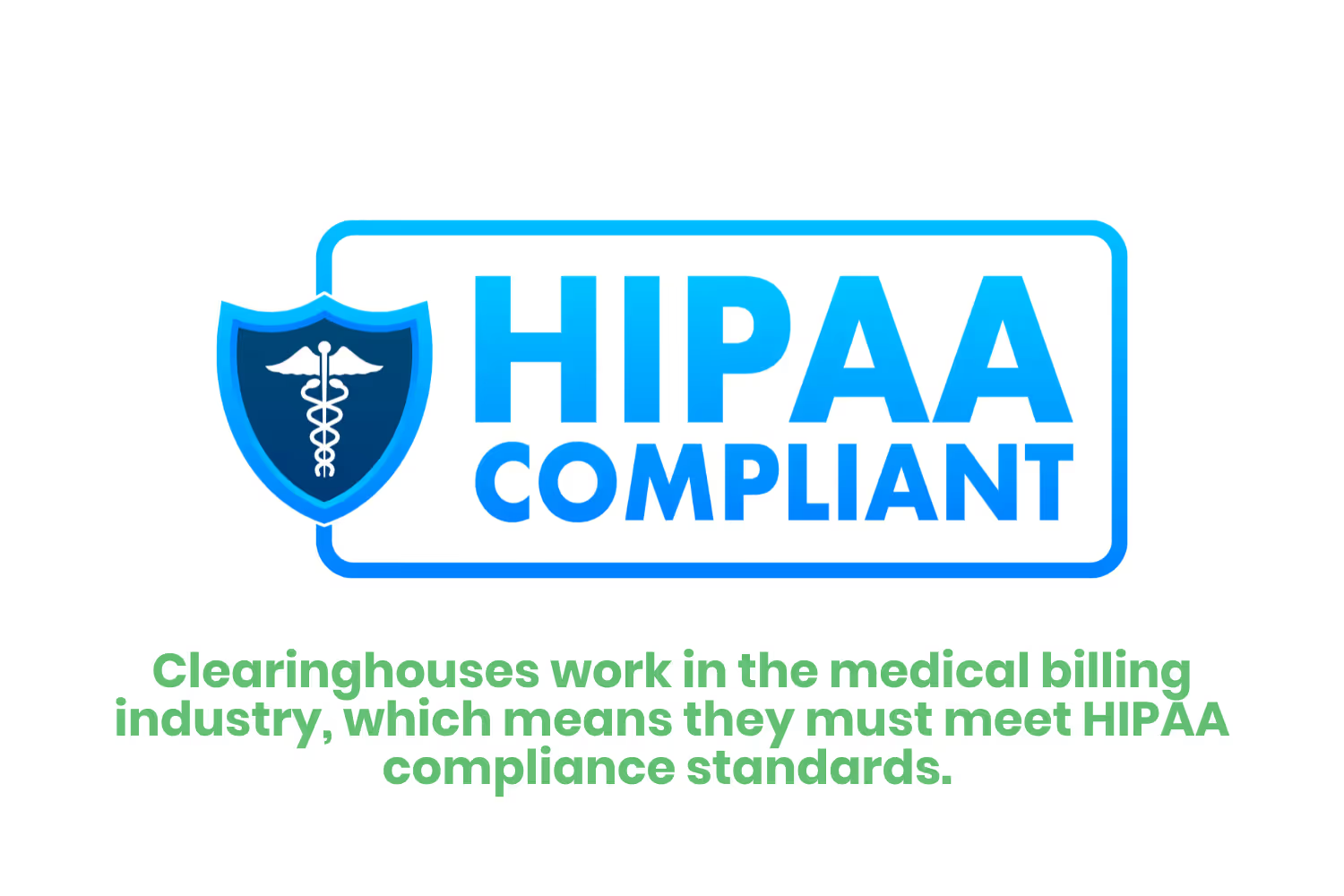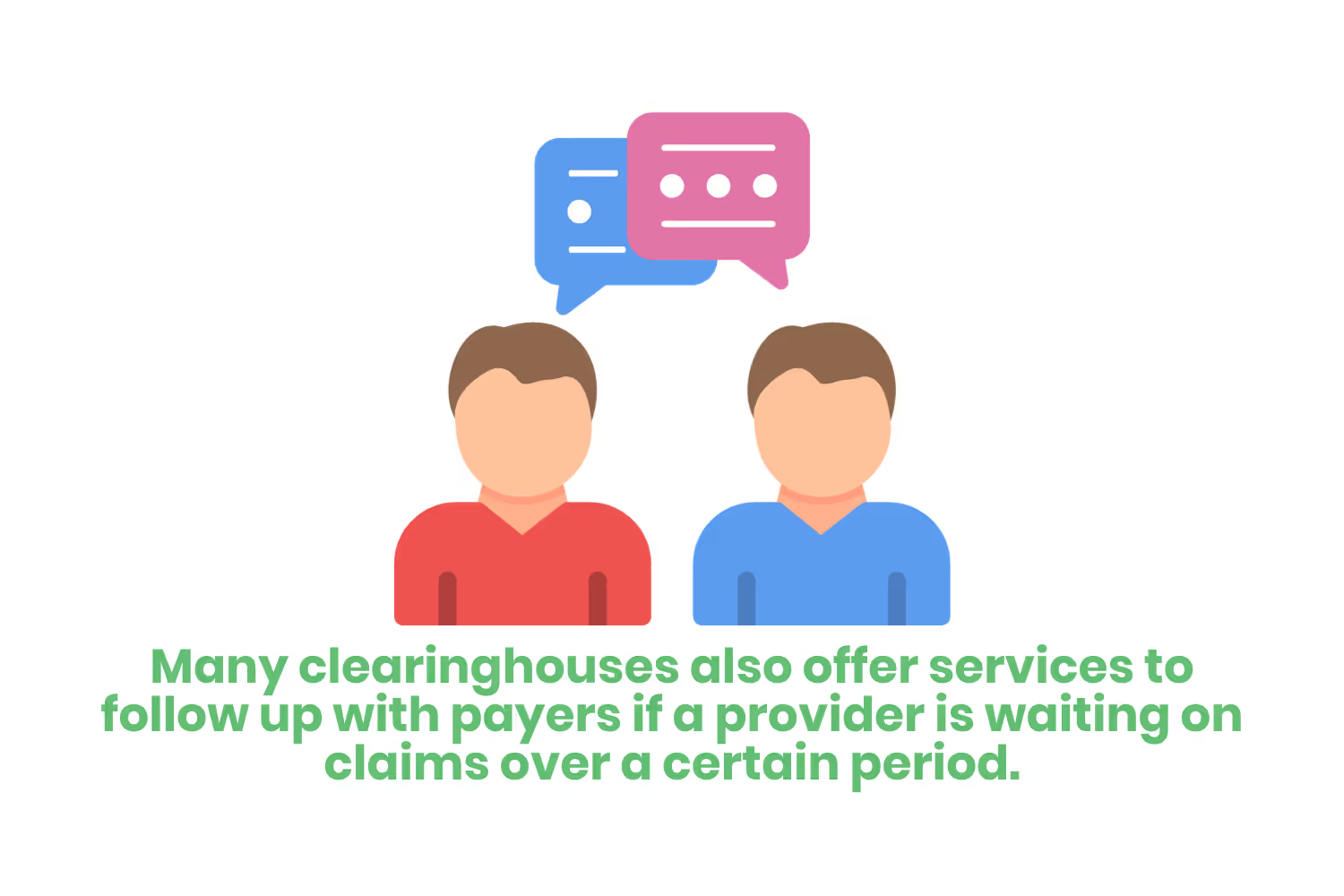[ANSWERED] What Does a Clearinghouse Do During Claim Submissions?
Let’s take you on a deep dive into the world of clearinghouses, and the complexities of what they do during claim submissions.

Providers process millions of medical insurance claims each day, and as of 2022, 11% of those are denied claims. Rejected claims are an unfortunate reality when working in the medical coding and billing field, and that is why clearinghouses are so pivotal. Healthcare providers are not only battling with revenue issues after all - they are dealing with expense issues as well.
Clearinghouses are helpful for providers to navigate an otherwise hostile financial environment by helping them collect much-needed revenue. That 11% of denied claims might seem trivial, but in reality, it adds up to millions of dollars!

Clearinghouses help to facilitate a seamless flow of information and communication between providers and payers. This is helpful because different providers use different software solutions to send their electronic claims to payers. We will get into the specifics of this later.
Let’s take you on a deep dive into the world of clearinghouses, and the complexities of what they do during claim submissions. Not only this, but we will go into more detail about what vital functions a clearinghouse carries out and how they save providers time and money.
What is a Clearinghouse?
I just said a lot of vague things about clearinghouses, and if you still have no idea what I am talking about, I’ll explain more! A clearinghouse is a third-party entity that assists with electronic transactions between healthcare providers and payers. Electronic transactions like submitting claims.
Fundamental concept aside, it gets more complicated than just sending your claims for you. Complicated in the best way, that is! You get a multitude of different benefits when you invest in a clearinghouse for your claim submissions. Some of the main benefits include:
- Faster reimbursement - I think this is pretty self-explanatory, but let’s go over why clearinghouses allow for quicker reimbursement turnaround. This third-party entity can utilize electronic billing, which allows for faster claim processing. The quicker an insurance company gets a bill, the sooner they will reimburse you.
- Built-in support and expertise - Sometimes you can’t know it all, and that’s okay! With a clearinghouse, you have a staff of experts at the ready to assist you with your medical billing concerns and questions. They can quickly let you know of any errors that pop up upon submitting a claim, which could later result in a rejection.
- Reduced administrative costs - Speaking of those experts who are ready to help, they will also save you from having to hire for your internal billing department. This cuts costs on employee salary, benefits, and other facets that come with onboarding new employees.
- Ensures HIPAA (Health Insurance Portability and Accountability Act) compliance - Clearinghouses work in the medical billing industry, which means they must meet HIPAA compliance standards. These third-party companies must protect the security of protected health information (PHI).
- Streamlines workflow - By utilizing a clearinghouse, you can work multiple workflows through one inclusive service. This saves you time, and in the medical billing world time equals money.
Clearinghouses have some pretty important key features when it comes to how they operate their claim submissions. Let’s go over what exactly takes place and why it is so important.

Data Validation
Many might argue that one of the most important key functions of a clearinghouse is its ability to validate data within medical claims. This thorough validation process ensures that the claim is complete, holds accurate information, and is free of any errors.
Without this step, healthcare providers would be at the mercy of unchecked claims, likely riddled with errors such as missing information or incorrect codes. Both of which will result in claim denials and delays in processing.
Claim Scrubbing
Claim scrubbing helps to ensure the data entered into the electronic claim is accurate. This advanced data validation software runs your practice’s claims through predefined edits and validations, a sort of quality control check. Claims that pass through with no issue are “clean claims”, which have a higher chance of processing.

Format Standardization
Things can become complicated when one practice works with multiple different insurances. After all, each insurance company has its specific requirements when it comes to accepting claims. These requirements are on every insurance company’s website (for the most part), but who has time to consistently go back and reread pages of guidelines?
This is why clearinghouses offer format standardization services. This step ensures that the information included in your claims meets the payer’s specific format and coding requirements. Coding requirements mean compliance with industry standards such as ICD-10 (International Classification of Diseases) and CPT (Current Procedural Terminology) codes. Making sure you have this coding translation correct when submitting your claims is important to reduce the likelihood of claim rejections.
Error Identification and Correction
If there are any errors found in your claim, you can rest assured your clearinghouse will immediately send you a report. The report will contain whatever issues are prohibiting your claim from successfully processing. Once a provider reviews this report, they can then correct any errors necessary to resubmit the claim.

- Some common errors include the following:
- Missing patient information.
- Invalid codes.
- Incomplete documentation.
- Changes in payer requirements.
- Prior authorizations.
- Manual processes and disparate systems.
Clearinghouses help identify and address these issues before any submission to the payer goes through. This step is vital for increasing the chances of successful claim processing.
Electronic Transmission
After your claims go through validation, a formatting check, and get scrubbed, they are on their way to the payer. Clearinghouses utilize electronic transmission services when sending this information to the respective insurance companies.
Due to the PHI on medical billing claims, this takes place through a secure network, ensuring HIPAA compliance. By doing this step electronically, healthcare providers can count on a faster process, especially compared to paper-based submissions. The benefit of electronic claim transmission is simply to get the information to the payer faster, so you can receive your reimbursement faster!
Receipt Confirmation and Reconciliation
Once you submit your claims, your clearinghouse will track and obtain confirmations from payers. On the opposite end of things, if there is an issue, as I said before, they will notify you promptly so you can handle any claim denials.
Note that clearinghouses will take the data from previously rejected claims to fix any known errors in the future. This helps you avoid the same mistakes over and over again, helping you cut down on time wasted waiting.
Many clearinghouses also offer services to follow up with payers if a provider is waiting on claims over a certain period. This service assists busy healthcare facilities in keeping track of claims they may otherwise forget about, and ensuring they receive accurate reimbursement for services provided.

Reporting and Analytics
Providing detailed reports and analytics is another great benefit you get when investing in a reputable clearinghouse service. Being able to access insights into your claim submission process, denial and acceptance rates, and payment statuses changes the game for medical billers.
Not only can healthcare workers use these numbers to simply keep track of revenue, but also:
- Identify data trends.
- Optimize the billing process.
- Enhance overall revenue cycle management.
- Compliance monitoring.
- Data backup.
Successful data reporting also helps providers stay proactive. By monitoring a claim’s progress, healthcare professionals can take the appropriate actions quickly if further issues pop up.
Conclusion
Streamlining the intricate process of claim submissions is the goal of all medical billing teams. Who doesn’t want a decrease in their denial rates? Clearinghouses not only help to achieve just that, but ensure your entire claim submission process is accurate, compliant, and efficient. Not to mention ease the administrative burdens on your team, leading to a higher overall morale and lower turnover rate.
Investing in a clearinghouse means you are ready to take the next step in your professional career. To not only improve your revenue cycle but to enhance the overall efficiency of your practice, allowing for more time to focus on patient care.
Emphasize your product's unique features or benefits to differentiate it from competitors
In nec dictum adipiscing pharetra enim etiam scelerisque dolor purus ipsum egestas cursus vulputate arcu egestas ut eu sed mollis consectetur mattis pharetra curabitur et maecenas in mattis fames consectetur ipsum quis risus mauris aliquam ornare nisl purus at ipsum nulla accumsan consectetur vestibulum suspendisse aliquam condimentum scelerisque lacinia pellentesque vestibulum condimentum turpis ligula pharetra dictum sapien facilisis sapien at sagittis et cursus congue.
- Pharetra curabitur et maecenas in mattis fames consectetur ipsum quis risus.
- Justo urna nisi auctor consequat consectetur dolor lectus blandit.
- Eget egestas volutpat lacinia vestibulum vitae mattis hendrerit.
- Ornare elit odio tellus orci bibendum dictum id sem congue enim amet diam.
Incorporate statistics or specific numbers to highlight the effectiveness or popularity of your offering
Convallis pellentesque ullamcorper sapien sed tristique fermentum proin amet quam tincidunt feugiat vitae neque quisque odio ut pellentesque ac mauris eget lectus. Pretium arcu turpis lacus sapien sit at eu sapien duis magna nunc nibh nam non ut nibh ultrices ultrices elementum egestas enim nisl sed cursus pellentesque sit dignissim enim euismod sit et convallis sed pelis viverra quam at nisl sit pharetra enim nisl nec vestibulum posuere in volutpat sed blandit neque risus.

Use time-sensitive language to encourage immediate action, such as "Limited Time Offer
Feugiat vitae neque quisque odio ut pellentesque ac mauris eget lectus. Pretium arcu turpis lacus sapien sit at eu sapien duis magna nunc nibh nam non ut nibh ultrices ultrices elementum egestas enim nisl sed cursus pellentesque sit dignissim enim euismod sit et convallis sed pelis viverra quam at nisl sit pharetra enim nisl nec vestibulum posuere in volutpat sed blandit neque risus.
- Pharetra curabitur et maecenas in mattis fames consectetur ipsum quis risus.
- Justo urna nisi auctor consequat consectetur dolor lectus blandit.
- Eget egestas volutpat lacinia vestibulum vitae mattis hendrerit.
- Ornare elit odio tellus orci bibendum dictum id sem congue enim amet diam.
Address customer pain points directly by showing how your product solves their problems
Feugiat vitae neque quisque odio ut pellentesque ac mauris eget lectus. Pretium arcu turpis lacus sapien sit at eu sapien duis magna nunc nibh nam non ut nibh ultrices ultrices elementum egestas enim nisl sed cursus pellentesque sit dignissim enim euismod sit et convallis sed pelis viverra quam at nisl sit pharetra enim nisl nec vestibulum posuere in volutpat sed blandit neque risus.
Vel etiam vel amet aenean eget in habitasse nunc duis tellus sem turpis risus aliquam ac volutpat tellus eu faucibus ullamcorper.
Tailor titles to your ideal customer segment using phrases like "Designed for Busy Professionals
Sed pretium id nibh id sit felis vitae volutpat volutpat adipiscing at sodales neque lectus mi phasellus commodo at elit suspendisse ornare faucibus lectus purus viverra in nec aliquet commodo et sed sed nisi tempor mi pellentesque arcu viverra pretium duis enim vulputate dignissim etiam ultrices vitae neque urna proin nibh diam turpis augue lacus.




